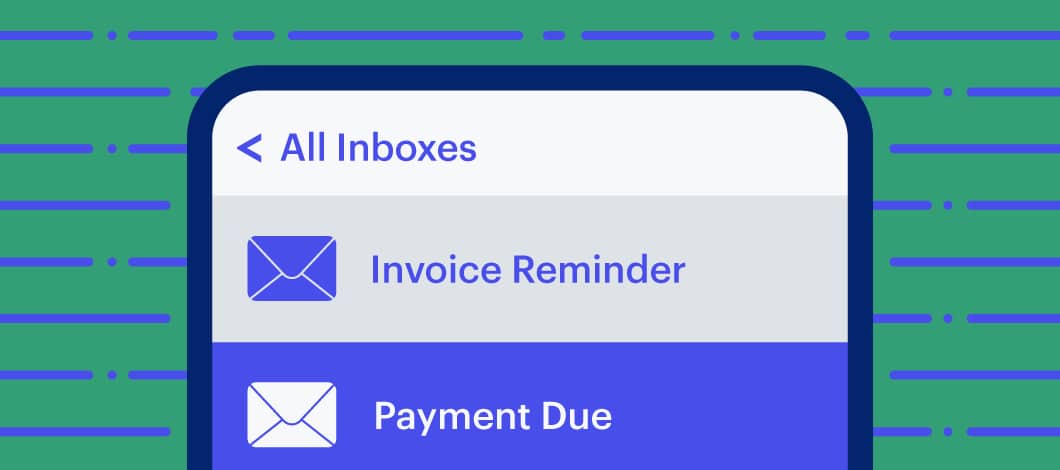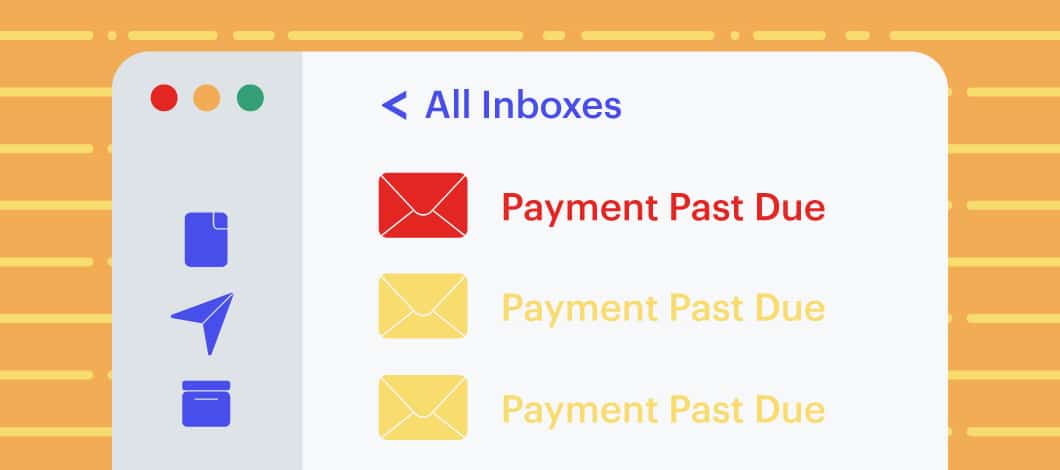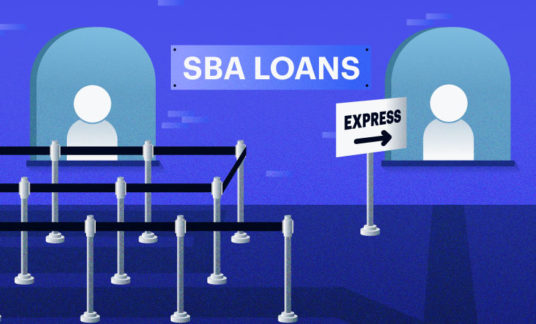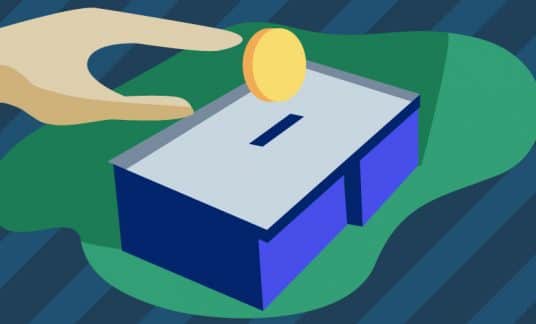Crafting a payment reminder email can be challenging. You need to be firm to collect the past due payment and not suffer a cash flow deficiency, but you also need to be polite to maintain good relationships with customers. Here are the past due invoice email scripts you can use to navigate these customer communications and achieve your goal.
How to Write a Payment Reminder Email
Be proactive. Send emails to alert customers before they miss the due date and check in with them until you receive a response or payment. Use these simple, polite payment reminder email templates to collect from your clients.
1. First Email: A Week Before the Due Date
Email the customer a week before the payment due date. Sometimes invoices fall through the cracks, so you can send a simple reminder to pay the bill.
The email lets your customers know that you keep up with your invoices. They might be less likely to forget to pay on time if they know you’re aware of the upcoming due date.
-
Subject: Invoice [#12345] coming due
Hello, [customer name].
Thank you again for your business.
I wanted to reach out to remind you that payment for invoice [#12345] is due next week on [date].
Please take a moment to review the invoice. If you have any questions, feel free to reach out. I look forward to hearing from you.
Thanks again,
[your name]
2. Second Email: The Day Before Payment Is Due
If you don’t receive a response or payment after the payment request email to the client, reach out again a day before payment is due.
This gives the customer some time to gather funds and pay their bill. If you reach out to them on the due date, they may not have enough time to make the payment.
In this (still friendly) payment reminder letter, request the payment and remind customers about their options (check, bank transfer, etc.).
-
Subject: Invoice [#12345] due tomorrow
Hello again, [customer].
I wanted to remind you that payment for invoice [#12345], totaling $1,500, is due tomorrow, [date].
Please refer to the invoice for instructions on how to remit payment.
If you have any questions or issues with payment, please let me know how I can help.
Thank you,
[your name]
Note: If you decide to charge late payment fees, you’ll want to remind the customer in this email of any penalties they’ll face if payment is overdue.
Make a Phone Call
A day after the invoice is overdue, call the customer. If you get a voicemail, state your reason for calling.
Don’t be pushy. There can be many reasons why they failed to pay you on time. It’s also possible you might have the wrong email address on file, and they didn’t receive any of your reminders.
When you speak with them, ask when they’ll be able to pay. If they’re having any issue getting the money to you, this is your time to make a plan that works for both of you.
3. Third Email: A Week After the Due Date
If you still haven’t gotten an adequate response from your client, you’ll have to reach out again with a past due notice. You’ll want to write a polite payment reminder email, but it’s time to let them know that they need to get you the money as soon as possible.
Include details about the invoice and attach a digital copy of the contract.
If you’re going to charge late fees, remind customers about the penalties they’ll face if they don’t pay their bills on time.
Use the following past due invoice email sample as a basis for your own message:
-
Subject: Invoice [#12345] now one week overdue
Hello, [customer].
I wanted to remind you that [$1,500] for invoice [#12345] was due last week on [date].
If you have already submitted payment, no further action is needed.
Please review the attached copy of the original invoice sent [date] and remit payment as soon as possible.
As a reminder, a late fee of [1.5%] will be added to the bill on [date].
If you have any questions or issues, please contact me immediately.
Thank you,
[your name]
4. Fourth Email: 2 Weeks After Due Date
After 2 weeks, give your customer another call. If you don’t reach them and they still haven’t responded to any overdue invoice reminder email, it’s time to take a firmer tone.
Directly ask for payment. Also, ask the customers to acknowledge that they’ve received your emails. If late-payment charges will begin to accrue soon, use that date to set a hard deadline. Knowing they’ll have to pay late fees soon may stir a customer to action.
-
Subject: 2 weeks overdue: payment for invoice [#12345]
Hello, [customer].
Invoice [#12345] is now 2 weeks overdue.
Please review the instructions on the invoice and submit payment before a late fee of [1.5%] begins to accrue on [date].
If you’re having issues submitting payment, feel free to reach out and I’ll be glad to assist you.
Please let me know when you have received this message.
Thank you,
[your name]
5. Fifth Email: 1 Month After the Due Date
Your final request for late payment notice should go out about a month after the due date. Be stern but professional in your tone. It’s still possible to salvage a lucrative working relationship.
In this email request, late payment charges should be used to show the customer that you’re serious — you’ll add money to their bill if they don’t act now.
-
Subject: FINAL NOTICE: Invoice [#12345] 1 month overdue
Dear [customer],
This is your final notice for invoice [#12345] totaling [$1,500]. Payment is now 30 days past due. As stated in the signed contract, a late fee of [1.5%] will be added to your total if payment is not received by close of business, [date].
If payment has already been submitted, disregard this notice. If not, please resolve this issue and submit payment immediately.
If you have any questions or are unable to pay, reach out.
Thank you,
[your name]
If Your Late Payment Request Letters Don’t Work
If your notices and calls haven’t spurred payment, it’s time to step up your actions and possibly change tactics. Start by calling the business more frequently or sending a letter by mail if you get no response.
You might remit the unpaid invoice to a debt collection agency. If you’re dealing with clients who refuse to pay, consider the last-resort move of taking the matter to small claims court. A decision in your favor can legally bind your customer to pay.
-
Should You Charge Late-Payment Fees?
If done right, the presence of late fees in a contract can encourage a customer to pay you on time.
Reasons for charging late fees include:
- Deterring customers from paying you late multiple times
- Being first in line if a client owes more than one business
- Increased ability to project incoming cash flow
Charging late fees shouldn’t be treated as a source of income. The main goal is to encourage payment while maintaining a mutually beneficial relationship.
Charge a small percentage (1%-3%) or a flat fee after an interval of 15-30 days, depending on your best judgment of what’s fair in your industry.
Ensure customers know ahead of time what fees they could incur before they sign the contract and before you do the work.
How to Avoid Late Payments
Taking steps to reduce the number of late payment incidents can help you avoid cash flow problems and keep your focus on your day-to-day operations — rather than continuously reaching out to customers for past-due funds. While the following options won’t put an end to all late payments, they can make it easier for customers to pay bills on time.
- Issue invoices as soon as possible, giving customers a good amount of notice before their payment’s due date.
- Be up-front and transparent about your prices so customers will know, or at least have an estimate of, what they’ll owe before the invoice arrives.
- Set clear, visible due dates and spell out any late fees before and after fulfilling the contract.
- Set up an autopay program for regular customers.
- Consider requiring an initial deposit, then billing the customer for the remaining amount when their order is filled or service is completed.
- Be flexible about what kind of payments you’ll accept, from various credit cards to checks and cash.
- Make online payments an option.
- If your customer base consists of a smaller amount of regulars, research a potential customer’s reputation and credit history before completing any transactions.
Consider Invoice Financing
If you’re encountering cash flow issues because of late payments, consider invoice financing to get through the funding gap.
Invoice financing, also known as accounts receivable financing, allows you to get funding now in exchange for your unpaid invoices. A lender will advance you a portion of what your customer owes — sometimes up to 80% — while you’re waiting for the full payment. Once your customer pays their invoice, the lender will release the remaining percentage of funds, minus any lender’s fees.
If you’re approved for invoice financing, you could receive funding on the same day.













